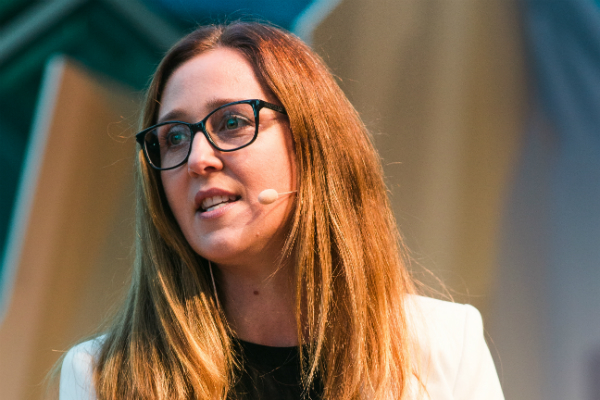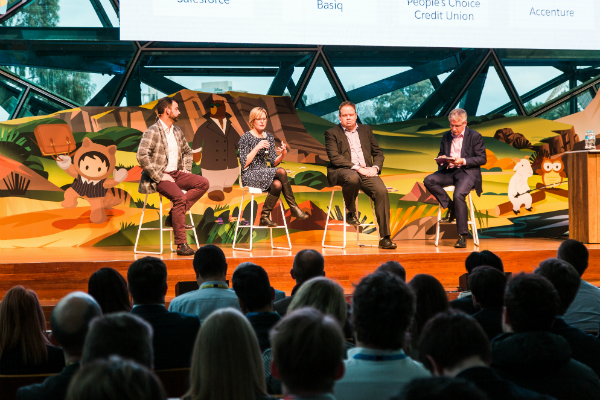MLC Life Insurance’s Chief Innovation and Transformation Officer Sarv Girn tells a tale that cuts to the heart of those heightened expectations – of a service agent answering a call from a customer wanting to cancel their life insurance.
The agent, empowered to help customers rather than tick boxes, got to know the customer’s challenge and pursued the best outcome to overcome them. That best outcome wasn’t a first-call resolution or a request fulfilled in record-beating time.
The agent learned that the customer’s reason for cancelling their policy was that they were in financial distress caused by illness and medical expenses. After finding this out, they suggested an alternative – to claim some of those costs under the policy. The customer, rather than cancelling their policy, had a significant portion of their costs covered.
The customer’s financial distress was alleviated and MLC, rather than losing a customer, built trust with and retained them.
Girn spoke in Financial Services Basecamp’s opening keynote about the intersection of trust-winning customer experience (CX) and empowering employee experience (EX), setting the scene for a day of discussion about how CX and EX impact trust; diversity; technology; balancing compliance with opportunity in open banking preparation; and more.
Here are more of my highlights from FInancial Services Basecamp.
The diversity dividend
The business value created by diversity was showcased in a Deloitte-moderated discussion between Allianz Retire+ Head of Customer Experience and Product Jacqui Lennon, Macquarie Bank Division Director Elizabeth Bartlett, and Futurist Chris Skinner.

Each panelist spoke of instances they’ve seen of diversity – not just the presence of a diverse group, but a range of people having a real voice – creating tangible value.
Jacqui Lennon, for example, spoke of a time when Allianz sought wide feedback on products targeted at retirees. There was a lightbulb moment – the greatest frustration of retired customers was receiving letters printed in 10-point font.
In hindsight it’s obvious that this would be one of the first things that older customers get frustrated with – it causes real ‘this company doesn’t understand me, doesn’t cater to me, is not for me’ moments. Hearing this feedback clarified such a simple solution to make communications really helpful to the customer, and to turn simple interactions into ‘this company gets me’ moments.
In this case, a narrow, shared aspect of the customers’ identities was important. That demographic had specific needs that could only be understood by having their voice heard. But if we look at the profile of Australia and the breadth of ethnic backgrounds, cultural identities, sexual identities, genders, socio-economic backgrounds and ages, that’s our customer.
Looking at most boards and leadership teams in Australia, we still have a fair way to go before the diversity of our country is fully represented in our corporate decision making. Until then we may fall short in our ability to understand and connect with our customers.
Making change count for customers and employees
Chris Skinner discussed the tendency he’s seeing in Australia of banks incrementally adding technology to create efficiency, and of the need for them to not just ‘transform’ in this way, but rebuild from the ground up as digital banks.
“When was the last time you heard of a bank that completely threw out the old to replace it with the new?” he asked.
“Well, you’ve found one,” said Macquarie Bank Head of People, Culture and Client Experience Rosalind Coffey. “If you’re looking for a bank that’s gone right back to first principles and rebuilt from the ground up to create a digital bank, then Macquarie is it.”
Six years ago, Coffey explained, Macquarie saw a need to become a digital bank and re-platformed its core banking.
And Macquarie is a good example of a bank that’s retooling most of its capabilities. But the bar’s being raised pretty quickly as new neos come to market – they’re even more agile and they’re even more digital, which will challenge how fast existing banks need to move. Realising the customer value of such a shift is also a challenge – bringing new technology to bear on CX in a way that’s really visible to and valued by customers.
Having a big impact on a CX is not a matter of doing one thing right or even doing one amazing thing.
Having a big impact on a CX is not a matter of doing one thing right or even doing one amazing thing.
Customers may love a bank’s app, but if the service they receive through a call centre doesn’t match that app experience – say, they have to explain their problem to three different people – their love for the app no longer matters.
Doing lots of small things right all the time, bringing value in the small moments and consistently, drives customer perceptions of value and drives trust.

Back to Girn’s point (and the point of Coffey’s title, encompassing both CX and EX), if you bypass your whole employee population and don’t give them the same tools that you’re putting in the hands of the customer, you’re hobbling them. They can’t create a rich experience in every interaction.
There’s long been a gap between the self-service capabilities available to bank customers via apps and other digital channels, and the tools available to the staff who provide service to those same customers. It’s widened as customers have been driven to the lower-cost self-serve options, until CX lives on the self-serve channels or the app, while bankers, internal admin staff and service agents have had one hand tied behind their backs.
And while a bank customer who’s 21 and whose financial life is getting their pay in and spending money can 100% run through an app, more complex customers are where profit lies. Those customers have different needs, some assisted, some unassisted – and they’ll get an inadequate experience if CX is supposed to be delivered solely through an app, no matter how great that app is.
So, the question is not ‘are we digitally transforming to increase efficiency?’; nor is it ‘is our app the best in market?’. It’s not even ‘have we digitised completely across CX?’.
It’s ‘are we providing a consistent level of service and are our people empowered to deliver the best customer outcomes right across the relationship, at every touchpoint a customer could want us and in every situation the customer faces?’.
At the point a bank can say ‘yes’, it will build trust and the customer – including the most profitable customer – will be an advocate.
Open banking is not a compliance exercise
Another open banking hurdle has been vaulted with the passing of the Consumer Data Right (CDR). Skinner spoke of open banking in the UK, sharing lessons for the Australian sector. For the big five traditional banks, the focus was remaining their customers’ primary bank. The neos, on the other hand, didn’t care about being the bank where salary was deposited.
Assigning value to the title ‘primary bank’ is an outdated approach, Skinner believes. A customer can have their pay go in, and their mortgage and utilities come out for 20 years. But if they transfer the rest of each pay packet over to a cool little neo that does really funky things to help them save and manage their spending, or that gives them a great payment experience, that neo has all of the data about how the customer lives their life.

In this scenario, the only thing the ‘primary bank’ knows about a customer is how much they pay on their mortgage each month and what they spend on electricity. It’s a decade since data became ‘the new oil’, yet undervaluing that oil is still shaping up to be one of the biggest risks to the established players.
Open banking is widely being seen as a regulatory compliance issue. The focus has been making sure that when customers want to make their data available, they can. But this mindset is missing the point of the CDR.
A bank that is preparing to make the data it holds available to third parties is addressing an important compliance requirement. By contrast the neos aren’t looking at CDR and open banking-readiness as a compliance issue. The see a market opportunity.
The conclusion for established players? Open banking is an opportunity to enrich customers’ lives with data from outside your own vaults.
Demo Jam – a winner and a grinner
It’s always a highlight – eight apps, four-minute real-time demos, with the audience picking a winner. And it was a tough one – with apps focused on compliance, commissions and personal financial management.
The winner was in that last camp, delivering real consumer-facing value. Connecting to more than 200 finservs, Money Brilliant promises to help people save money and time by tracking spending and analysing data to find deals that are better, flag tax deductions that might be missed otherwise and alert users to anything that needs immediate attention. A worthy winner!

But for me, a close second was another app, Creative Mass’s WealthConnect.
WealthConnect optimises compliance and CX for wealth firms, connecting the dots of initial fact-finds and producing Statements of Advice (SOAs) a world away from the usual tomes of text with an occasional black and white chart.
The Wealth Connect SOA, produced automatically straight out of the Salesforce platform, looks like a corporate prospectus. It’s a high-quality digital document that shows everything about a client’s current financial position, investment portfolio, strategies, goals and progress towards those goals.
And this underpins everything Basecamp was about: of course amazing apps like Money Brilliant and WealthConnect improve efficiency, but that’s not the greatest value they deliver. They both have the potential to dramatically improve both CX and EX, aiding compliance and empowering staff to deliver consistently excellent outcomes at every customer interaction.
We see tremendous opportunities for organisations that see changes to banking as market opportunities. To find out more about how open banking will help finservs create compelling and personalised consumer interactions, download the Accenture and Salesforce ebook Beyond compliance: Winning with open banking.


























